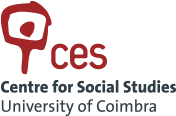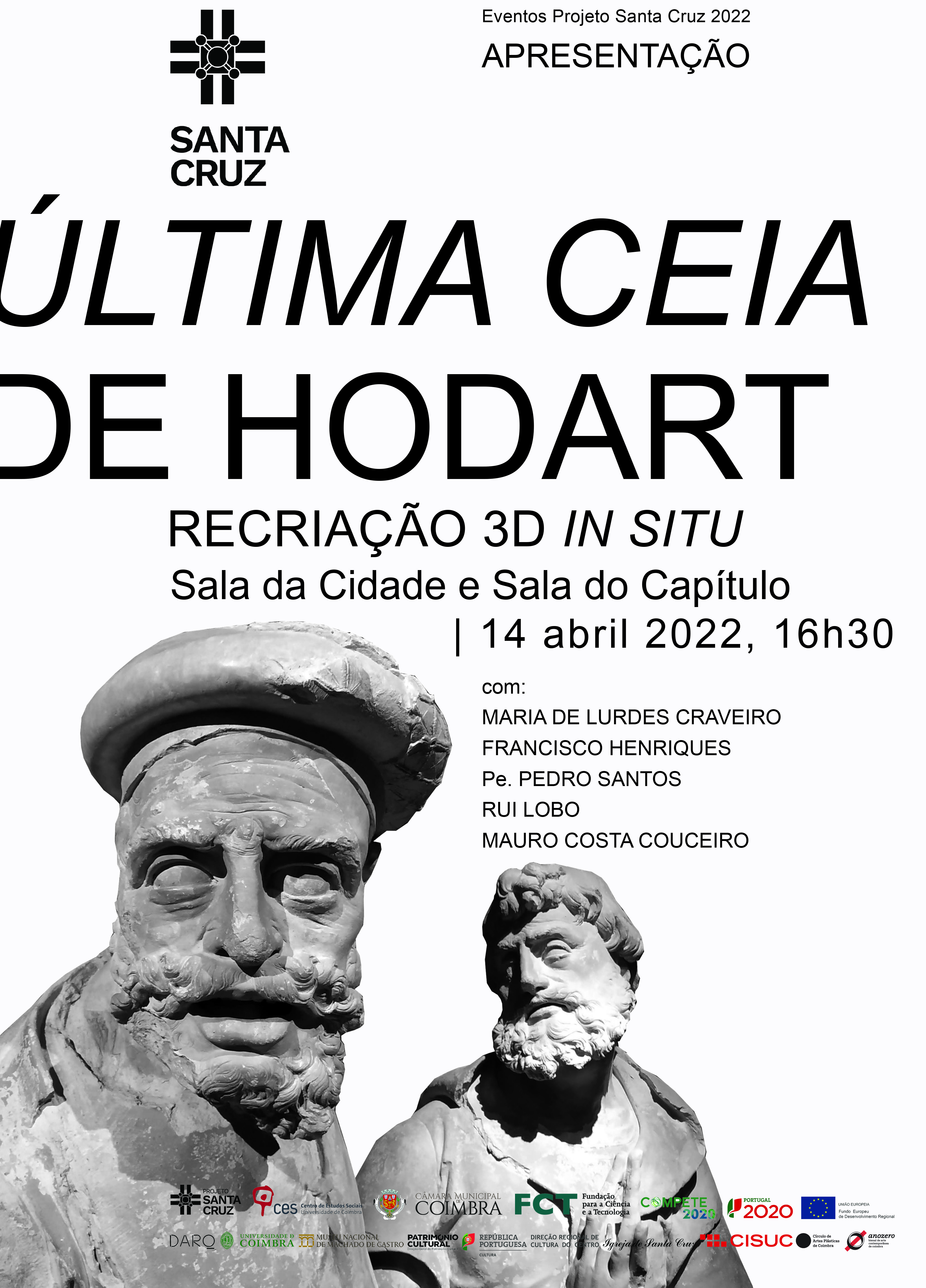Others
«Last Supper» by Hodart: 3D Recreation in Situ
April 14, 2022, 16h30
Sala do Capítulo e Sala da Cidade dos Paços do Concelho de Coimbra
About
The “Last Supper” is a remarkable set of terracotta sculptures on a natural scale, made between 1530 and 1534 by Hodart, a sculptor of French origin, hired by the Canons Regular. After the suppression of the Religious Orders, the set suffered several vicissitudes, which led to the almost destruction of the pieces, recently restored by the Machado de Castro National Museum, where they are exhibited today.
A 3D VideoMapping projection will be shown reconstituting a hypothetical original layout of the Last Supper, on the east wall of the former Santa Cruz refectory, in the walled-in opening of the space where they were originally located. The presentation will also include an explanation of the set and a “making of” of the proposed reconstitution.
Bio notes
Maria de Lurdes Craveiro is Associate Professor with Aggregation in the Faculty of Arts and Humanities of the University of Coimbra and Corresponding Member of the National Academy of Fine Arts. She has a PhD in Art History from the Faculty of Arts and Humanities of the University of Coimbra (2002) and has been a lecturer at the Institute of Art History since 1988. She has over a hundred scientific papers published in Portugal, Spain, Belgium, Italy, Brazil and the USA, covering the exercise of conceptual revision in Art History, heritage issues or the fields of painting, sculpture and architecture from the late Middle Ages to the neoclassical period. Since April 2021, she has been the Director of the Machado de Castro National Museum.
Francisco Henriques - PhD in Art and Heritage Sciences and Master in Theories of Art, he is a researcher at CIEBA-FBAUL, in the Francisco de Holanda - Art and Heritage Sciences cluster. He dedicates his research projects to the study of stone sculpture from the Renaissance period in Portugal, in particular to the retabular and para-retabular structures, searching for the geometrical presuppositions underlying their compositional organisations, mechanisms of meaning that better clarify the iconological readings of the respective narrative programmes.
Fr. Pedro Santos was born on October 13th 1981 in Coimbra and lived his entire childhood in Almagreira, Pombal. He studied in the seminaries of Leiria and Coimbra and was ordained priest on June 18, 2006, in Sé Nova. He was parish priest in the municipality of Condeixa; he was also parish priest in the northern part of the municipality of Oliveira do Hospital; later he was a teacher at the Seminary of Leiria; and later secretary to the Bishop of Coimbra, responsible for vocations ministry and pre-seminary, coordinator of episcopal celebrations and Rector of the Major Seminary of Coimbra. In the last few years, he has been in Rome preparing his doctorate in Sacred Liturgy at the Pontifical Liturgical Institute of Saint Anselm, which he hopes to finish soon. He is currently parish priest in Solidum with Con. Sertório Batista of the Pastoral Unit Aeminium, in the historical centre of the city of Coimbra.
Rui Lobo is a Professor in the Department of Architecture and a researcher at the Centre for Social Studies (CES) at the University of Coimbra. He is the author of several books and articles in the field of theory and history of architecture from the 16th to 18th centuries, published in Portugal and abroad, encompassing Portuguese architecture, university architecture and the architecture of the Jesuits. He is, since 2018, the Principal Investigator of the Santa Cruz Project, project FCT 30704.


